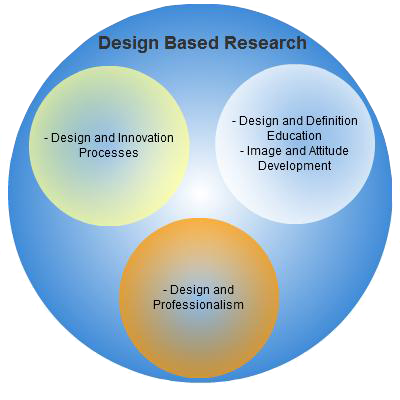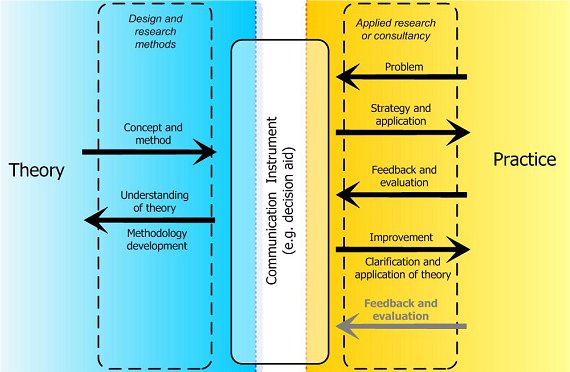Design-Based Research
Embedded in the Delft University Design tradition SEC uses and further develops Design-Based Research (DBR) as a research methodology. The main character is the use of prototypes (science educational and communicational services, processes and products) that immediately form an intervention in practice and reflects on theory. Based on our research cases, case studies, advisory/consultancy assignments and our interaction with other design researchers at Delft University we reflect on this new methodology as well. In the future we want to found a centre for Design-Based Research expertise. In the following figure the SEC design based research focus is depicted:

Theory-based and practice-tested processes
An overview of the theory-based and practice-tested processes in design-based research (DBR) is depicted in the figure below. DBR not only uses theoretical input, but produces theoretical insights, concepts and reflection. DBR is recognized in educational research as an emerging framework to guide improved educational research (Amiel and Reeves, 2008). We think that the similarity of the contexts of educational and communication research indicates a potential added value of DBR to existing communication research approaches.
Four aspects of DBR guide the refining of problems, solutions, methods and design principles (Amiel and Reeves, 2008). First, the analysis of practical problems is executed by both researchers and practitioners. Second, solutions are developed and informed by existing design principles. Third, the process includes iterative steps to test and refine solutions in practice. Fourth is reflection to produce design principles and enhance the solution implementation.
DBR is different from other approaches that might seem similar at first. DBR differs from evaluation research, which is focused on end-term evaluation instead of adjusting the communication process during intervention (Reeves et al., 2006). Also action research is not the same as DBR, but could be seen as part of DBR. Both are focused on problems in practice; and practitioners are involved in the research process. The goal of action research is to improve practice by reflection; one of the goals of DBR is generating new theory or reflecting on theory that supports practice in coping with practical problems (Dick, 2002; McNiff, 2002).
DBR and design are not similar. The act of designing and applying DBR follow a similar process due to the common base of an iterative design cycle similar to the practical problem solving approach (Van Strien, 1986 in: Roozenburg and Eekels, 2003). Design research does not lead to a tested theory next to a working prototype as in DBR. Design research focuses on developing theory and a methodology of designing, and DBR uses design research at a higher abstraction level (in figure 1 'design methodology' is especially mentioned as part of the overarching 'theory'). To conclude, DBR combines various methods of design-like research.
